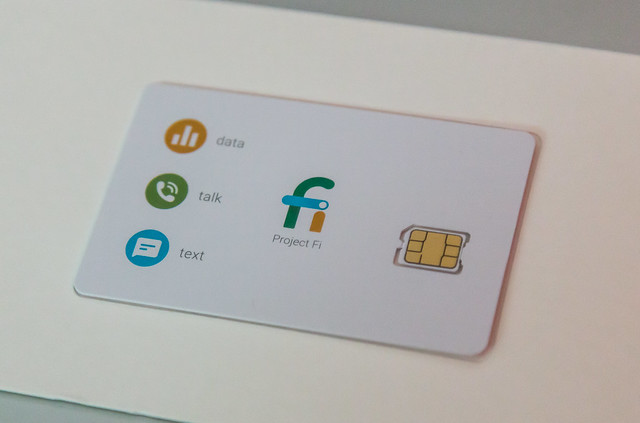Difference Between Google Fi and Ting
Mobile virtual network operators, otherwise known as MVNOs, continue to play an important, albeit small role in the mobile industry, especially with the increasing use of mobile devices and data services. MVNO is a GSM based system where a mobile operator neither own spectrum nor operate their own network infrastructure, instead form partnership with the mobile network operators (MNOs) to provide smartphone voice and data services to targeted groups. MVNOs need to lease capacity from one of the real network operators to provide mobile services. Although they do not own radio network assets or licenses to use the radio spectrum, they seem just like any of the network operators.
Search giant Google has an MVNO license in the United States using the Sprint, T-Mobile, and regional carrier US Cellular network. Project Fi, as it was originally named, already has hundreds of thousands of subscribers in the United States who take advantage of low prices and a technology that effectively combines the classic mobile network with Wi-Fi. Ting is yet another and a new player in the MVNO space that wants to provide maximal independence and support to customers. Ting also has access to two major mobile networks Sprint and T-Mobile, but unlike Google Fi, you cannot switch between the two networks. Well each network has its pros and cons. Let’s see how they stand up to each other.

What is Google Fi?
Google Fi, formerly Project Fi is an alternate wireless carrier and a mobile virtual network operator (MVNO) telecommunications service by Google. It offers wireless services and easy communication across networks and devices, and access to a wide range of online services exclusively offered by Google. Google Fi is nothing but a phone carrier operated by Google, providing data services using three major network carriers – Sprint, T-Mobile, and US Cellular. It is a system that effectively combines the classic mobile network with Wi-Fi. It facilitates easy and intelligent switching between the three networks, effectively providing seamless connection and communication across various networks and devices. It switches automatically to the best network available.

What is Ting?
Ting is a customer-driven mobile virtual network operator and wireless service provider based out of Toronto, Ontario. It’s relatively a new player in the MVNO space that aims to provide maximal independence and support to customers. It leverages the two major 4G LTE network operators Sprint and T-Mobile to provide access to a wide range of mobile services. However, unlike Google Fi, Ting does not allow switching between networks; rather it allows you to choose between the GSM or CDMA service based on your location and coverage. It provides excellent customer support and service quality and speed. While Ting may not be as feature-rich as Google Fi, the plans are relatively inexpensive.
Difference between Google Fi and Ting
Coverage for Google Fi and Ting
– Google Fi is the Google’s own mobile virtual network operator and wireless service provider that provides easy communication across networks and devices, and access to a wide range of online services exclusively offered by Google. It allows you to effectively switch between the three major network operators Sprint, T-Mobile and US Cellular to provide uninterrupted network coverage and data services. Ting is yet another Toronto-based MVNO that uses T-Mobile and Sprint network to provide network coverage and data services. However, unlike Google Fi, it does not allow you to switch between networks; rather it urges you to choose between the GSM and CDMA service based on your location.
Pricing
– Google Fi provides a flexible pricing plan to keep things simple. It has one simple plan for everyone that starts at $20 per month for unlimited calling and texting, Wi-Fi hotspot, and 24/7 customer support. On top of it, you get additional data at $10 for each GB used until 6 GB. Ting, on the other hand, does not have plans; instead you only pay for what you use. Starting at $6 for a line, you can add as many lines as you want. Additionally, you pay only for the data you use, but if you use a lot of data, then Ting is probably not a viable option for you.
Unlimited Plan
– Unlike Google Fi, Ting does not offer any unlimited plans. In fact, Ting is only as good as your usage. Ting has flexible prices for texting and calling, but only if you keep it within limits. Ting charges $3 for up to 100 minutes of calling, $10 for 101-500 minutes and so on. Same goes for texts; $3 for up to 100 texts, $5 for 101 to 500 texts, and so on. So, if you do more texts and calls per month, then the bill goes up accordingly. Google Fi, on the other hand, offers unlimited calls and texts at just $20 a month. Google Fi is clearly the winner in terms of unlimited offerings.
Devices
– Google Fi’s devices selection is very limited with a small list of sanctioned devices, including the Pixel 3 and Pixel 3 XL, along with other Pixels. It also has a great selection of the Motorola phones and Samsung’s flagship Galaxy phones. Ting, on the other hand, has a pretty decent selection of the latest smartphones from leading brands, including the flagships and the latest iPhones. So, no more waiting in long lines at the Apple store for your favorite iPhone because Ting has you covered.
Google Fi vs. Ting: Comparison Chart

Summary of Google Fi verses Ting
If you’re considering switching, the very first thing you have to be worried about is the network coverage around the area you live. Google Fi enables you to intelligently switch between the three dominant mobile networks – Sprint, T-Mobile, and US Cellular – providing seamless access to a wide range of mobile services exclusively offered by Google. Also, Google keeps things simple with its flexible pricing plan. Ting also offers excellent customer support and flexibility. However, unlike Google Fi, it does not offer plans; it rather urges you to pay for what you use. Ting is an excellent choice as long as you don’t exceed your usage in terms of calling, texts, and data. The more you use, the more you pay.
- Difference Between Caucus and Primary - June 18, 2024
- Difference Between PPO and POS - May 30, 2024
- Difference Between RFID and NFC - May 28, 2024
Search DifferenceBetween.net :
Leave a Response
References :
[0]Ahonen, Tomi T., and Joe Barrett. Services for UMTS: Creating Killer Applications in 3G. Hoboken, New Jersey: John Wiley & Sons, 2002. Print
[1]Korhonen, Juha. Introduction to 3G Mobile Communications. Norwood, Massachusetts: Artech House, 2003. Print
[2]Image credit: https://en.wikipedia.org/wiki/Ting_Inc.#/media/File:Ting_company_logo.png
[3]Image credit: https://www.flickr.com/photos/diversey/25109932164
